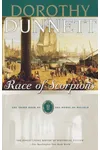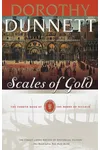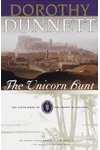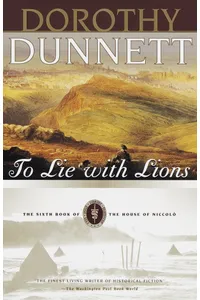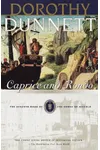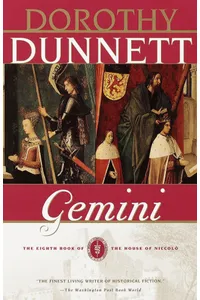Step into the vibrant world of the House of Niccolò, where a cunning apprentice rises to conquer the bustling markets and treacherous courts of 15th-century Europe! Dorothy Dunnett’s historical fiction saga, spanning eight novels, follows Nicholas vander Poele’s thrilling journey through the Renaissance, blending meticulous research with heart-pounding intrigue. Perfect for fans of rich storytelling, this series is a hidden gem waiting to captivate you.
With its sprawling cast, exotic locales, and plots as intricate as a Venetian tapestry, House of Niccolò offers an immersive escape into a world of ambition, betrayal, and unexpected alliances. Let’s explore how this masterpiece came to be, its unforgettable books, and why it still enchants readers today.
How House of Niccolò Began
Dorothy Dunnett, a Scottish author celebrated for her Lymond Chronicles, launched House of Niccolò in 1986 with Niccolò Rising. Inspired by her fascination with the Renaissance’s economic and cultural upheavals, Dunnett crafted a prequel series to explore the roots of her Lymond universe. Her exhaustive research—spanning merchant banking, trade routes, and even medieval gossip—brought authenticity to Nicholas’s saga, making history feel alive and electric.
Dunnett’s background as a portrait painter and her travels across Europe infused the series with vivid detail. She wove real historical figures and events into Nicholas’s fictional rise, creating a narrative that feels both epic and intimate. Her goal? To capture the Renaissance’s spirit through one man’s relentless ambition.
The Heart of House of Niccolò
The series kicks off with Niccolò Rising (1986), where young Nicholas, a dyer’s apprentice in Bruges, reveals a cunning mind beneath his cheerful facade. His schemes propel him into the world of commerce and politics, setting the stage for a saga of power and peril. The Spring of the Ram (1987) follows Nicholas to Trebizond, a Byzantine outpost, where he navigates trade and war with dizzying skill.
In Scales of Gold (1991), Nicholas ventures to Africa, exploring Timbuktu’s vibrant trade hubs, while grappling with personal betrayals. The series culminates in Gemini (2000), a Scottish showdown that ties together Nicholas’s sprawling journey. Themes of identity, loyalty, and the cost of ambition run deep, with Dunnett’s dense prose and labyrinthine plots demanding—but rewarding—reader attention.
From Venice’s canals to Cyprus’s courts, the series paints the Renaissance as a global stage. Dunnett’s characters, flawed yet magnetic, drive the narrative, while her wit and historical precision make every page a discovery. It’s historical fiction at its boldest, blending thriller-like suspense with profound human drama.
Why House of Niccolò Resonates
House of Niccolò has earned a devoted cult following for its intellectual depth and emotional intensity. Fans on platforms like Goodreads praise its “roller coaster of plots” and unforgettable characters, with Nicholas often dubbed “the man with nine lives” for his knack for survival. Dunnett’s ability to make economic history gripping—think merchant deals as high-stakes as sword fights—sets the series apart.
Its legacy lies in its fearless scope and Dunnett’s influence on historical fiction. By spotlighting lesser-known settings like Timbuktu and Trebizond, she expanded the genre’s horizons, inspiring readers to explore history’s margins. Decades later, the series remains a benchmark for immersive storytelling, with re-reads revealing new layers of brilliance.
- Publication Years: 1986–2000
- Number of Books: 8
- Key Settings: Bruges, Venice, Timbuktu, Scotland
- Awards: Dunnett received an OBE for literature in 1992
Grab Niccolò Rising and dive into House of Niccolò’s dazzling Renaissance world! Whether you’re a history buff or a fan of epic tales, Nicholas’s adventures promise a journey you won’t forget.


